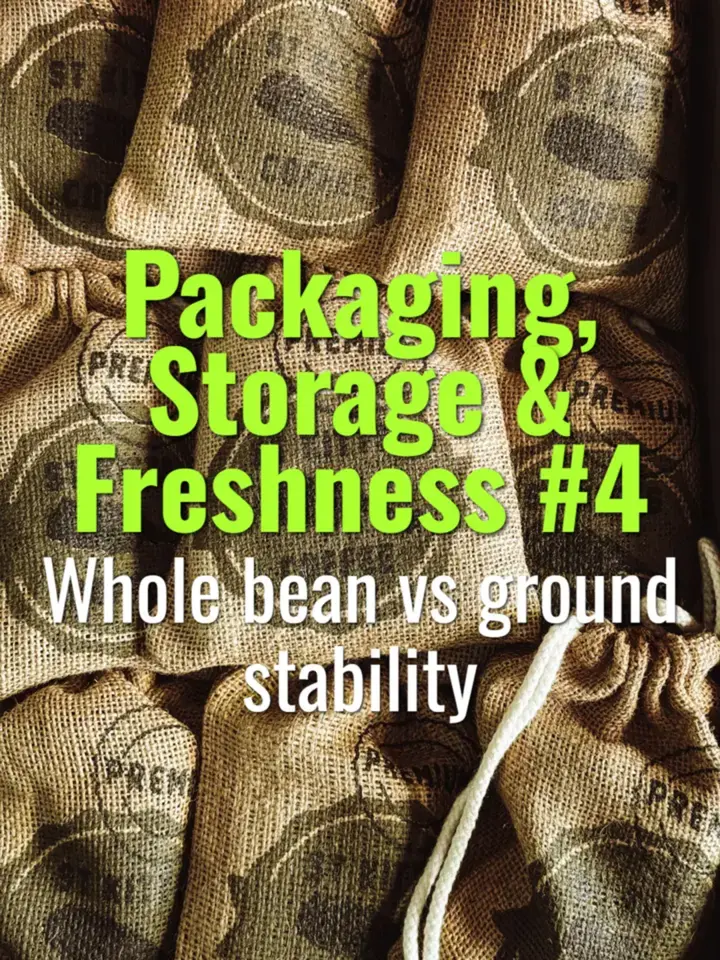Whole bean vs ground stability
Why whole beans stay fresher longer than ground coffee, and how particle size impacts oxidation, aroma loss, and shelf life.
- Coffee Basics Nerds
- 1 min read
Article 4 of 12 in Packaging, Storage & Freshness/

Whole Bean Stability
- Whole beans have a lower surface area exposed to oxygen and moisture.
- Degassing is slower and more controlled.
- Shelf life: 2–4 weeks post-roast (longer with valve-sealed packaging).
Ground Coffee Instability
- Grinding dramatically increases surface area.
- Aromatic compounds escape within minutes to hours.
- Oxidation and staling accelerate rapidly.
- Shelf life: a few days at best once opened, even in sealed bags.
Key Factors
- Particle Size: Finer grounds (espresso) stale faster than coarse grounds (French press).
- Oxygen Exposure: The more particles, the more oxygen contact.
- Moisture Uptake: Grounds absorb humidity quickly, clumping and degrading flavor.
Packaging Implications
- Pre-ground coffee requires nitrogen flushing and valve-sealed bags to extend shelf life.
- Still inferior to whole beans freshly ground before brewing.
Practical Recommendations
- Buy coffee as whole beans whenever possible.
- Grind just before brewing for maximum aroma and flavor.
- For pre-ground use, store in airtight containers and consume quickly.
Summary
Whole beans maintain freshness far longer than ground coffee due to reduced surface exposure. Grinding accelerates oxidation, aroma loss, and staling, making grind-on-demand the gold standard for quality brewing.